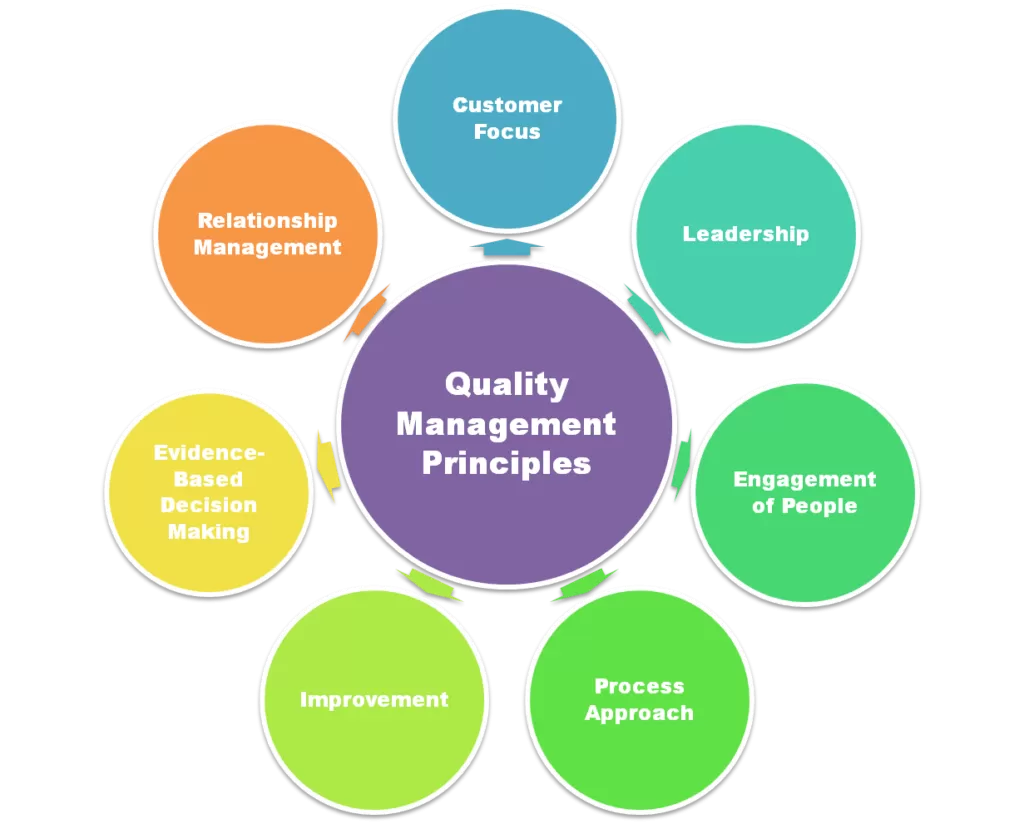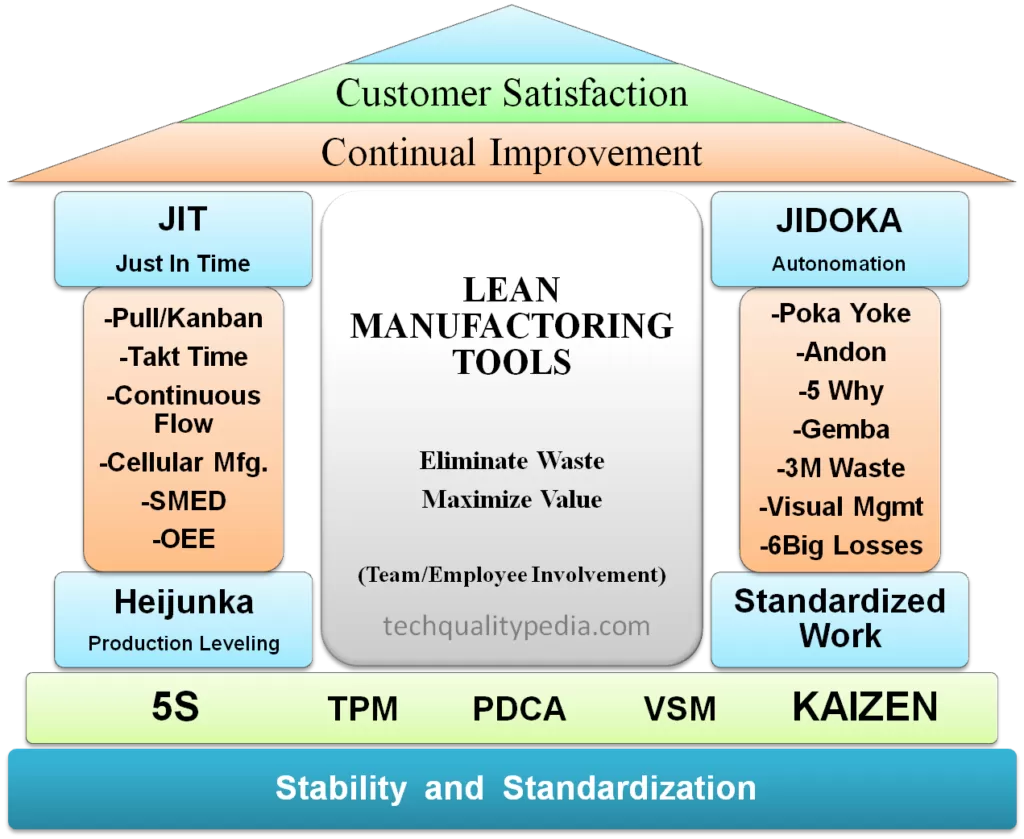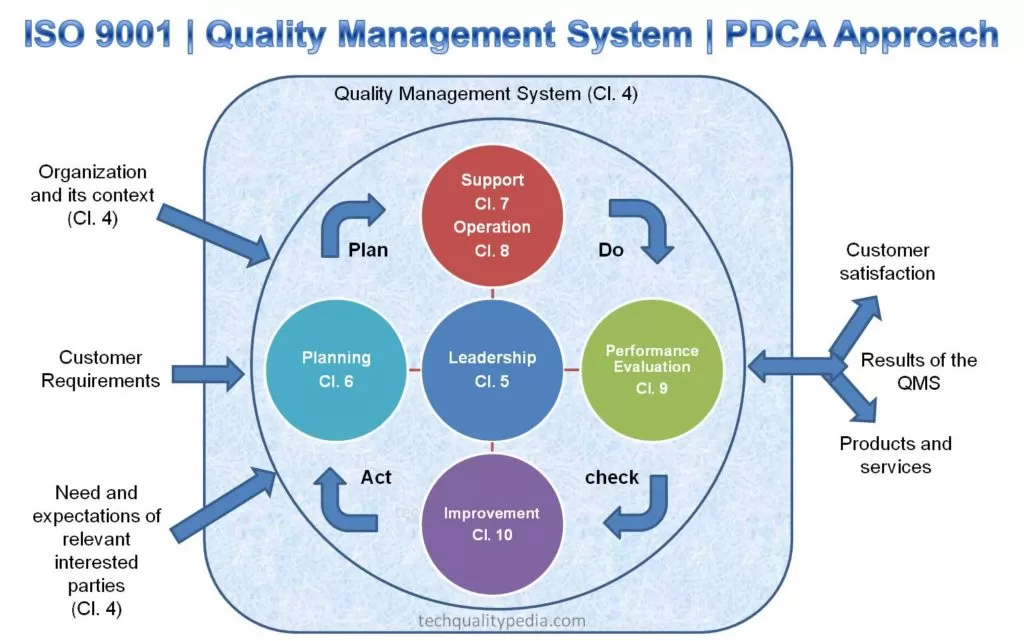A quality management system is a set of policies, processes, and procedures that are needed for production, development, and services planning and execution in an organization’s core business field.
ISO 9001 is the basic and most recognized standard that defines the QMS requirements.
ISO 9001 integrates with other management systems where the structure is the same, such as IATF 16949:2016, ISO 14001:2015 (Environmental Management Standard), and ISO 45001:2018 (Occupational Health and Safety Management standard), etc.
Let’s understand the meaning of some important terms that are generally used in QMS.
Table of Contents
Quality
The degree to which a group/set of inherent characteristics fulfills requirements (i.e. “Customer Satisfaction”)
Management
The People in the Organization-Top, Middle, and Lower Levels.
System
“Set of interrelated or interacting elements”
Management System
“System for determining/establishing strategy, policies, objectives, and goals, and actions to achieve those goals/objectives”.
Quality Management System
Management System to direct and control the company about quality.
What is Quality Management System?
QMS incorporates the organization’s various internal processes and aims to provide a process and risk-based thinking approach to project execution. A process-based QMS enables businesses to define, track, monitor, and enhance their core business processes, resulting in enhanced business efficiency.
Quality Management Principles
There are 7 Quality Management System principles described in the ISO 9001:2015 standard:

- Customer focus
- Leadership
- Engagement of People
- Process Approach
- Improvement
- Evidence-Based Decision Making
- Relationship Management
Quality Management System | Clauses
The Quality Management Systemstandard consists of 10 clauses. The first three clauses provide a background to the standard, and seven main clauses (4 to 10) describe theQMS requirements:
- Clause 1: Scope
- Clause 2: Normative references
- Clause 3: Terms and definitions
- Clause 4: Context of the organization
- Clause 5: Leadership
- Clause 6: Planning
- Clause 7: Support
- Clause 8: Operation
- Clause 9 Performance evaluation
- Clause 10: Improvement
Quality Management Systems | Standards
The four primary standards of the ISO 9000 series are:
- ISO 9000: 2015 -> Quality Management System – covers the fundamental concepts & Vocabulary.
- ISO 9001: 2015 -> Quality Management System – defines the QMS requirements
- ISO 9004: 2015 -> Managing an organization’s long-term/sustained success and focusing on how to make the QMS system more effective, reliable, and efficient.
- ISO 19011:2011 -> Provides guidelines for auditing QMS (Internal and external QMS audits).
The other management system standards include:
- IATF 16949:2016 – for Quality System-automotive Industries.
- ISO 14001:2015 – for Environmental Safety.
- ISO 45001:2018 – for Occupational Health and Safety. Earlier known as OHSAS 18001.
Elements of Quality Management System
The management quality system elements and requirements help to achieve the organizational objectives and goals. Some of the common elements/requirements of QMS include:
- The company’s quality objectives and Policy.
- Quality manual.
- SOPs-Standard operating procedures, Quality Plans, WIs-Work instructions.
- Relevant quality records.
- Internal processes and their interactions.
- Customer satisfaction- product quality.
- Continual Quality Improvement.
Benefits of Quality Management System
The major benefits of a management quality system include:
- Enhance customer satisfaction level by meeting their needs and requirements.
- Provide the right direction to achieve the company’s objectives, goals, and mission.
- Helps in maintaining and controlling documents and records.
- Helps in business expansion and growth.
- Identifying risks and opportunities to mitigate them.
- Improve product and process quality.
- Reduce cost and increase productivity.
- Engaging employees to achieve functional objectives and the organization’s goals.
- Identifying and reducing process variations.
- Detecting and preventing defects/mistakes.
- Facilitating and Identifying training needs of workers and staff.
You’ll also like:
- Quality Management System Procedures
- ISO Clauses 9001 | ISO 14001 | ISO 45001– Clause Comparison
- Clauses of ISO 14001 | Environmental Management System ISO 14001
- ISO 45001 Clauses | Occupational Health & Safety (OH&S)
- IATF 16949 Clauses | IATF 16949 Requirements
- How to obtain ISO 9001 Certification?
- ISO 9001 Certification Fees | ISO 9001 Certification Body
- What is the ISO 9001? ISO 9001 2015 | Requirements | Principles
- Management Review | Management System Review
- Environmental Management System EMS | ISO 14001 standard



